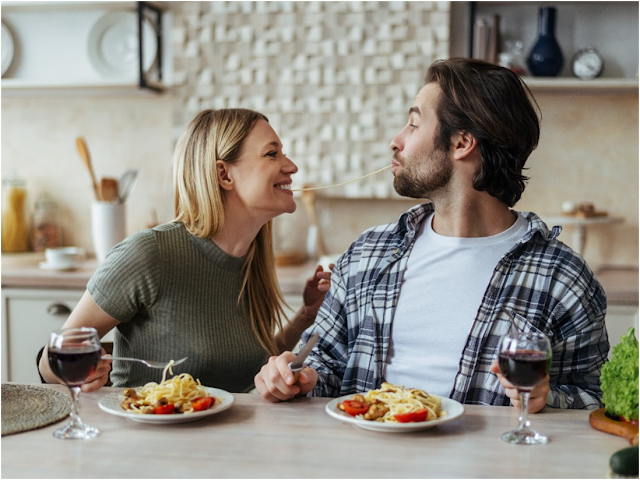Cooking is not an easy activity. When you prepare your dishes, they have to appeal to the people they are intended for. If you can't do that, there's no need to worry. With a little practice, you can improve your cooking skills to impress your guests. To help you treat your guests, we'll teach you how to make your dishes look good in this article. Discover our professional secrets for turning your preparations into gastronomic masterpieces.
Choose the right ingredients
Ingredients play an
essential role in creating sublime dishes. Choosing the right ingredients from
the start is crucial to achieving outstanding results. Choose fresh, seasonal,
high-quality produce. Fresh ingredients offer stronger flavours, pleasant
textures and optimal nutritional quality. Choose local markets, organic
producers and reputable suppliers to ensure the freshness and quality of your
ingredients.
In addition to
freshness, consider where the ingredients come from. In fact, local products
showcase the unique flavours of your region and support local farmers. If you
are in Quebec or other parts of Canada, you can find good spices on Maple Treasures. You can find all the sweet and savoury spices you
need.
Choose high quality
ingredients, even for condiments and seasonings. Choose extra-virgin olive
oils, freshly ground spices, quality herbs and homemade sauces. All of this
will give your dishes an exceptional dimension.
Master the cooking techniques
Having the right
ingredients is not, however, enough to make good food. You also need to master
the cooking techniques. By using the right methods, it is possible to preserve
the flavours, textures and nutritional qualities of the ingredients. Here are
some examples of cooking techniques.
- Steaming: This is ideal for preserving
the freshness of ingredients and maintaining their tender texture. It is
ideal for vegetables, seafood and fish;
- Slow cooking: allows the flavours to
develop fully. Meats, stews and soups benefit particularly from this
technique. By cooking slowly over low heat, ingredients release their
aromas and become tender and tasty;
- Pan-frying or grilling: Pan-frying or
grilling is ideal for quickly searing meats, vegetables and seafood,
giving them a beautiful colour and grilled flavour;
- Sous vide cooking: also known as low
temperature vacuum cooking, involves sealing food in vacuum bags to cook
it. It retains the natural juices and texture of the ingredients, creating
juicy and tender dishes.
While cooking, you may
need to use a variety of cooking methods. This will depend on what you are
preparing. It is therefore essential to master them all.
Play with flavour combinations
Playing with flavour
combinations is a key skill for enhancing your dishes and tantalising your
guests' taste buds. By mixing ingredients with complementary or contrasting
flavours, you can create harmonious and surprising taste combinations.
As a first step, try a
sweet and savoury contrast. This involves mixing sweet ingredients with savoury
ingredients to create a balance of flavours. For example, combining fresh fruit
with grilled meat or salty cheese can bring a sweet and savoury dimension to
your dishes.
You can also try a
sweet and sour balance. For example, a squeeze of fresh lemon can enhance the
flavour of a fish or seafood dish. A hot-cold contrast can also create an
interesting sensory experience. Try a refreshing sorbet with a hot and spicy
dish to create a pleasant contrast in taste.
Don't be afraid to
venture off the beaten track and explore new flavour combinations. Be creative
and let your palate be your guide. By mastering flavour combinations, you can
create unique and surprising dishes that will delight your guests' taste buds.
Elevate the Visual Appeal
In addition to taste,
the visual presentation of your dishes can greatly enhance the dining
experience. Pay attention to the colours, textures, and arrangement of your
ingredients. Create visually appealing plates by incorporating elements of
balance, contrast, and symmetry.
Use vibrant and
contrasting colours to make your dishes visually appealing. Incorporate
colourful vegetables, fruits, and garnishes to add pops of colour to your
plate. Consider the overall colour palette and ensure that it complements the
flavours and ingredients of the dish.
Texture is another
important aspect of visual appeal. Play with different textures by combining
crispy, crunchy, smooth, and creamy elements. This adds depth and visual
interest to your dishes.
Arrange your
ingredients thoughtfully and create appealing patterns or designs on the plate.
Consider the principles of symmetry and balance to achieve an aesthetically
pleasing arrangement. Garnish with fresh herbs or edible flowers to add an
extra touch of elegance.
Plate Presentation Techniques
There are various
plate presentation techniques you can utilise to elevate the visual appeal of
your dishes. Here are a few examples:
- Layering: Create visually pleasing
layers of ingredients, such as stacking vegetables or alternating slices
of protein and vegetables.
- Drizzling: Use sauces, dressings, or
reductions to create artistic drizzles or patterns on the plate. This adds
a touch of elegance and enhances the overall presentation.
- Garnishing: Sprinkle fresh herbs,
microgreens, or edible flowers on top of your dishes to add a pop of
colour and freshness.
- Negative Space: Utilise negative space
on the plate to highlight the main ingredients and create a clean and
sophisticated presentation.
Remember, presentation
is not just about aesthetics; it also affects how the dish is perceived and
enjoyed. A beautifully presented dish can evoke anticipation and enhance the
overall dining experience for your guests.
By following these
tips and incorporating them into your cooking routine, you can make your dishes
not only taste better but also look visually stunning. With practice and a bit
of creativity, you'll be able to create culinary masterpieces that will leave a
lasting impression on your guests.










